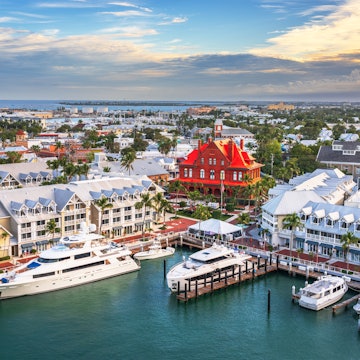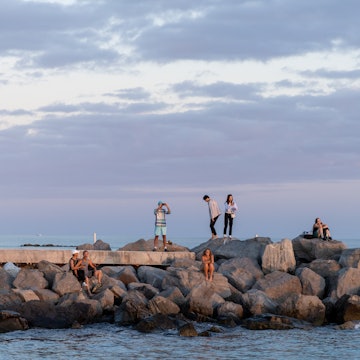
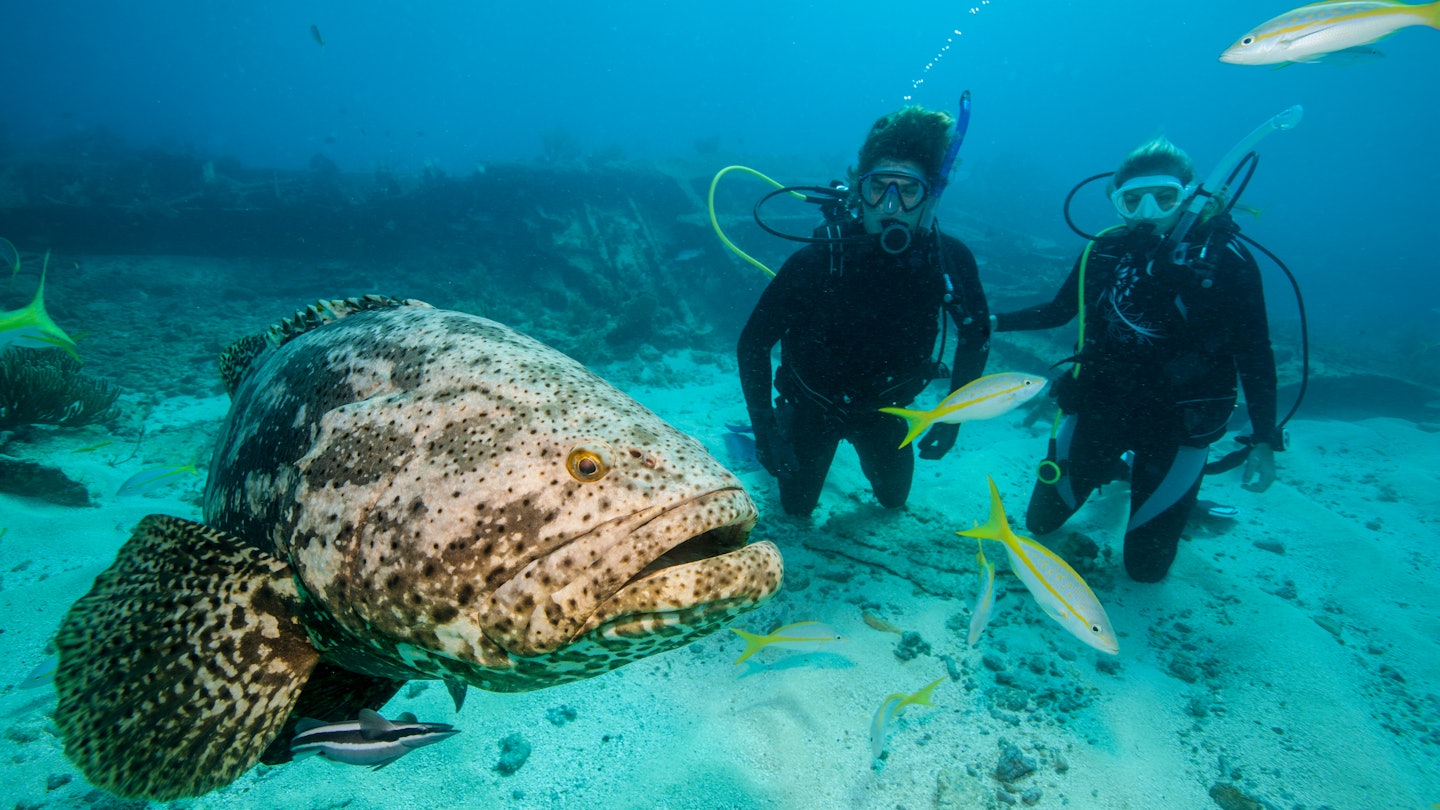
Extraordinary marine life lies off the long coast of Florida. WaterHouse Marine Images/Shutterstock
A famous naturalist once said Florida is like a spoon of freshwater resting delicately in a bowl of saltwater – a spongy brick of limestone hugged by the Atlantic Ocean and the Gulf of Mexico. Such unique geology and ecology understandably make waterborne activities some of the most popular things to do in the state – with snorkeling and scuba diving high on the list.
What’s more, Florida boasts North America’s largest coral-reef system, with teeming schools of fish, rays and other marine wonders easily accessible thanks to a jewel-like chain of state and national parks (where most of the preserved acreage is open sea). Wreck diving in Florida is equally epic, with some sites even accessible to snorkelers.
Ready to take the plunge? Slip on your fins, slap on your mask and prepare for underwater wonders at Florida’s seven best spots for snorkeling and diving.
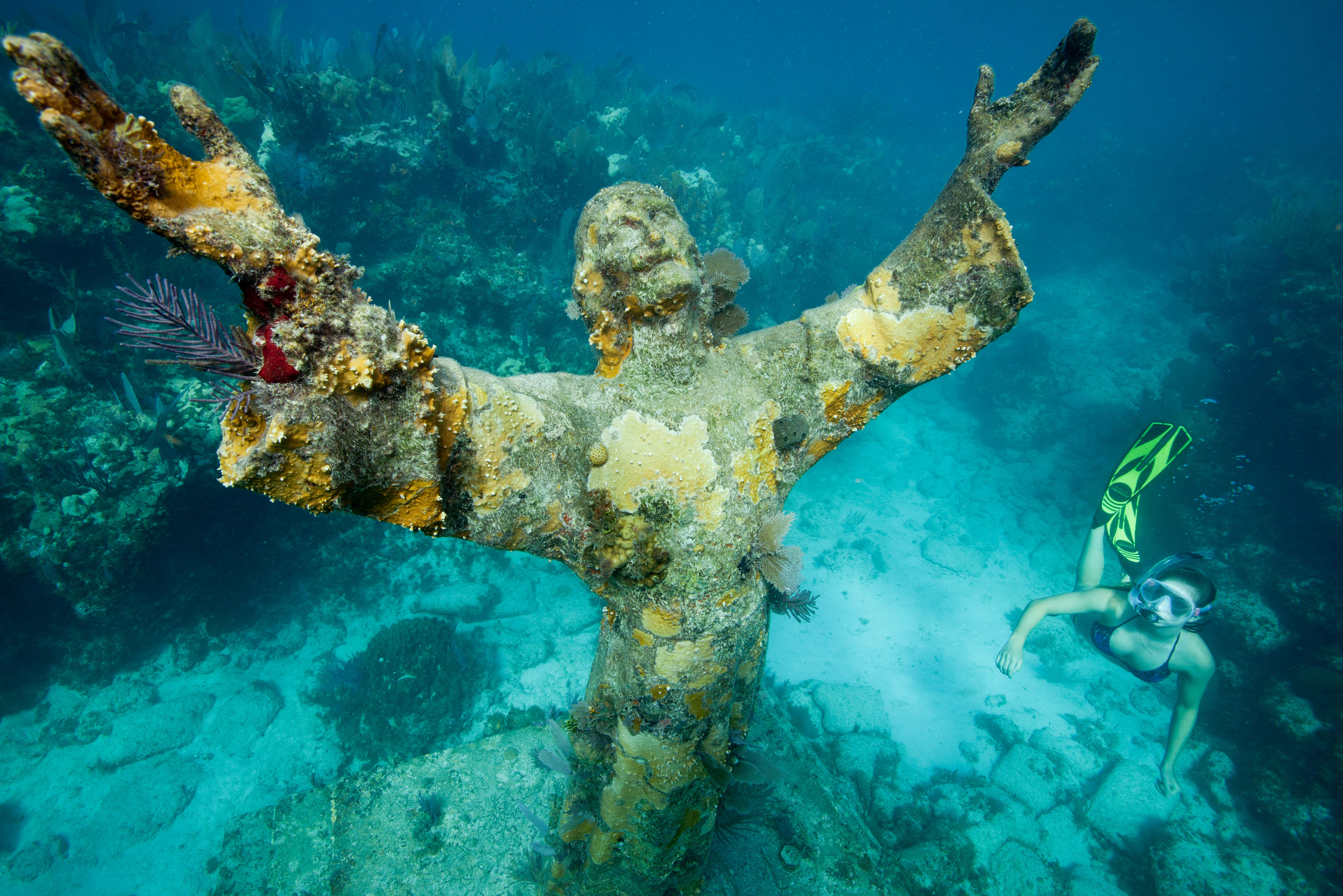
1. John Pennekamp Coral Reef State Park
Best for underwater sculpture
John Pennekamp on Key Largo was the USA’s first underwater park – and while 170 acres of the park lie on land, more than 48,000 acres (75 sq miles/194 sq km) extend into the ocean. Before you get out into or onto that water, be sure to take in some of the pleasant beaches and stroll along the nature trails – all part of the park, too.
Yet the park’s real appeal lies underwater. Its most famous attraction is the coral-fringed Christ of the Abyss, an 8.5ft (2.5m), 4000-pound (1814kg) bronze sculpture of Jesus – a copy of a similar sculpture off the Portofino Peninsula in northern Italy. On calm days, the park offers snorkeling trips to the statue, 6 miles (9.7km) offshore; along the way, expect to spot filigreed flaps of soft coral, technicolor schools of fish, dangerous-looking barracuda and massive yet graceful sea turtles.
Planning tip: Coral Reef Park Company is the in-park go-to for booking excursions of all sorts, with trips into the waters to explore the Benwood shipwreck as well as French and Molasses Reefs.

2. Biscayne National Park
Best for extraordinary reef life
Just to the east of the Everglades and right on Miami’s southern doorstep, Biscayne National Park is almost entirely composed of the waters of Biscayne Bay and the Atlantic Ocean. A portion of the world’s third-largest reef sits here just off the coast, along with mangrove forests and the northernmost Florida Keys. Outside Hawaii and nearby Key Largo, this might be the best reef viewing and snorkeling you’ll find in the USA.
Snorkeling trips offer you an immersion in Biscayne’s biologically diverse ecosystem. On a half-day trip, you’ll visit two different sites, exploring coral reefs, a shipwreck or a bayside setting amid the mangroves, where you can see soft coral and sea sponges. Scuba-certified divers can sign on for a six-hour trip that includes two dives. Mingling aside the reefs are dozens of shipwrecks, some dating back to the 18th century.
Above the surface, you’re likely to see plenty of seabirds, from cormorants perched on mooring posts and flocks of brown pelicans flying in formation to steely-eyed osprey gliding just above the water. Pods of bottlenose dolphins zip across the horizon, while crabs and lizards scuttle amid the roots of red mangroves along the water’s edge. Although the islands within the national park are today uninhabited, you can learn about the notable history of former 19th-century homesteaders and Gatsby-esque industrialists who once lived in the area.
Planning tip: Visitors can explore half a dozen sunken ships contained within the park on an excursion along the Maritime Heritage Trail. Three of the vessels are suited only for scuba divers, while the others – particularly the Mandalay, a two-masted schooner that sank in 1966 – can be accessed by snorkelers.
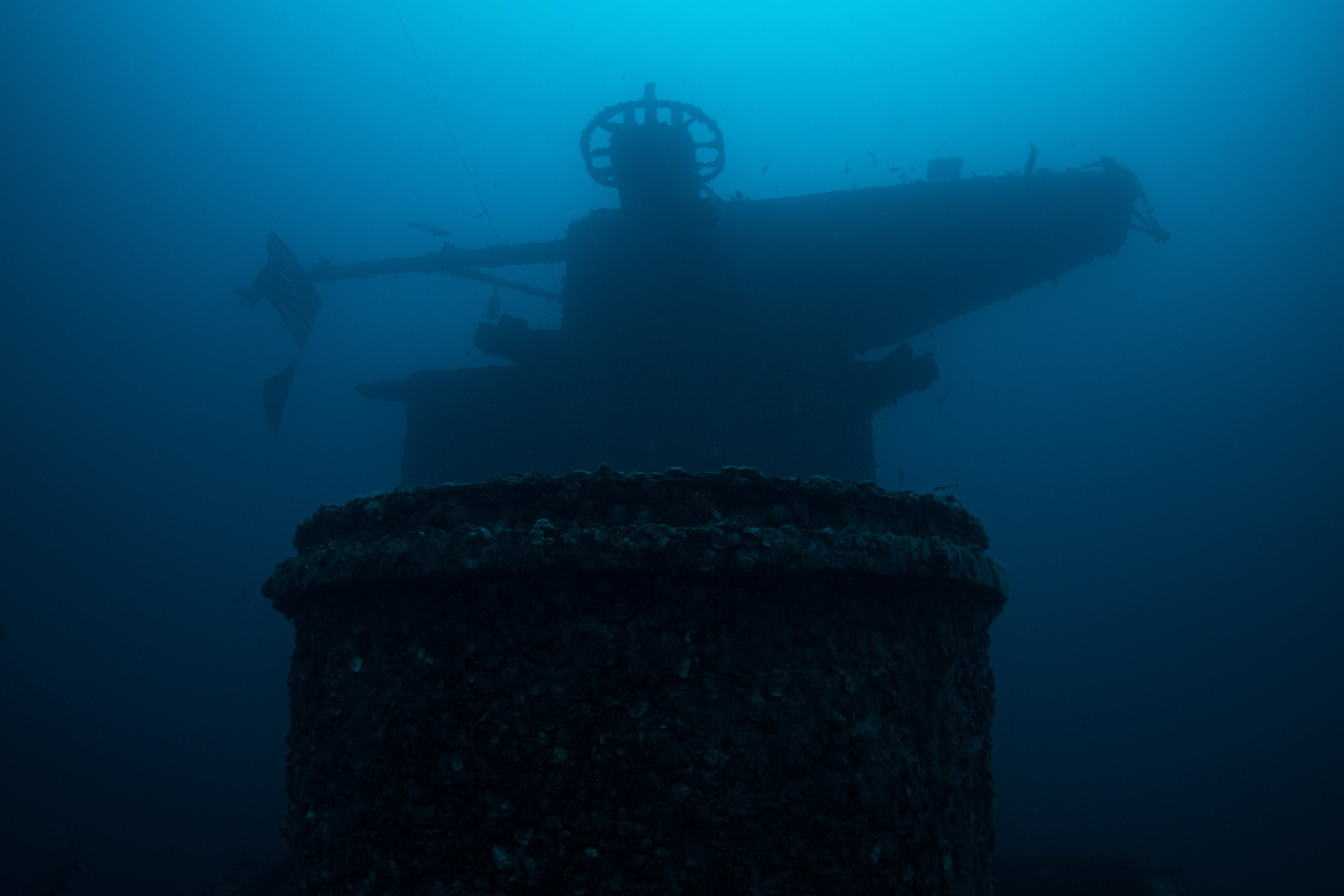
3. Florida Panhandle Shipwreck Trail
Best for exploring submerged “museums”
Scuba diving is one of the top activities in the Florida Panhandle thanks to the region’s clear waters, natural and artificial reefs, sand flats, underwater geological formations and diverse marine life. And manmade detritus, too: a highlight of the region’s diving scene is the Florida Panhandle Shipwreck Trail, a string of 20 shipwrecks offshore from Pensacola, Destin, Panama City and Port St Joe.
The shipwrecks include sunken oil-field supply vessels, a World War II minesweeper and a tugboat called Miss Louise. While some sank unintentionally, others were deliberately scuttled and plunged to the ocean floor to become a habitat for wildlife and an attraction for divers. One of them is the USS Oriskany (aka the “Great Carrier Reef”): after service in the Korean and Vietnam Wars, the “Mighty O” was deliberately sunk in 2006 and is now the world’s largest artificial reef.
Detour: Plan on visiting the Panhandle in June to see the newest batch of Florida sunseekers: a group of tiger sharks that have flocked off Okaloosa Island (between Destin and Fort Walton Beach) in recent years. While we wouldn’t recommend snorkeling or diving among them, they make for quite the sight when seen from above, from the island’s fishing pier.
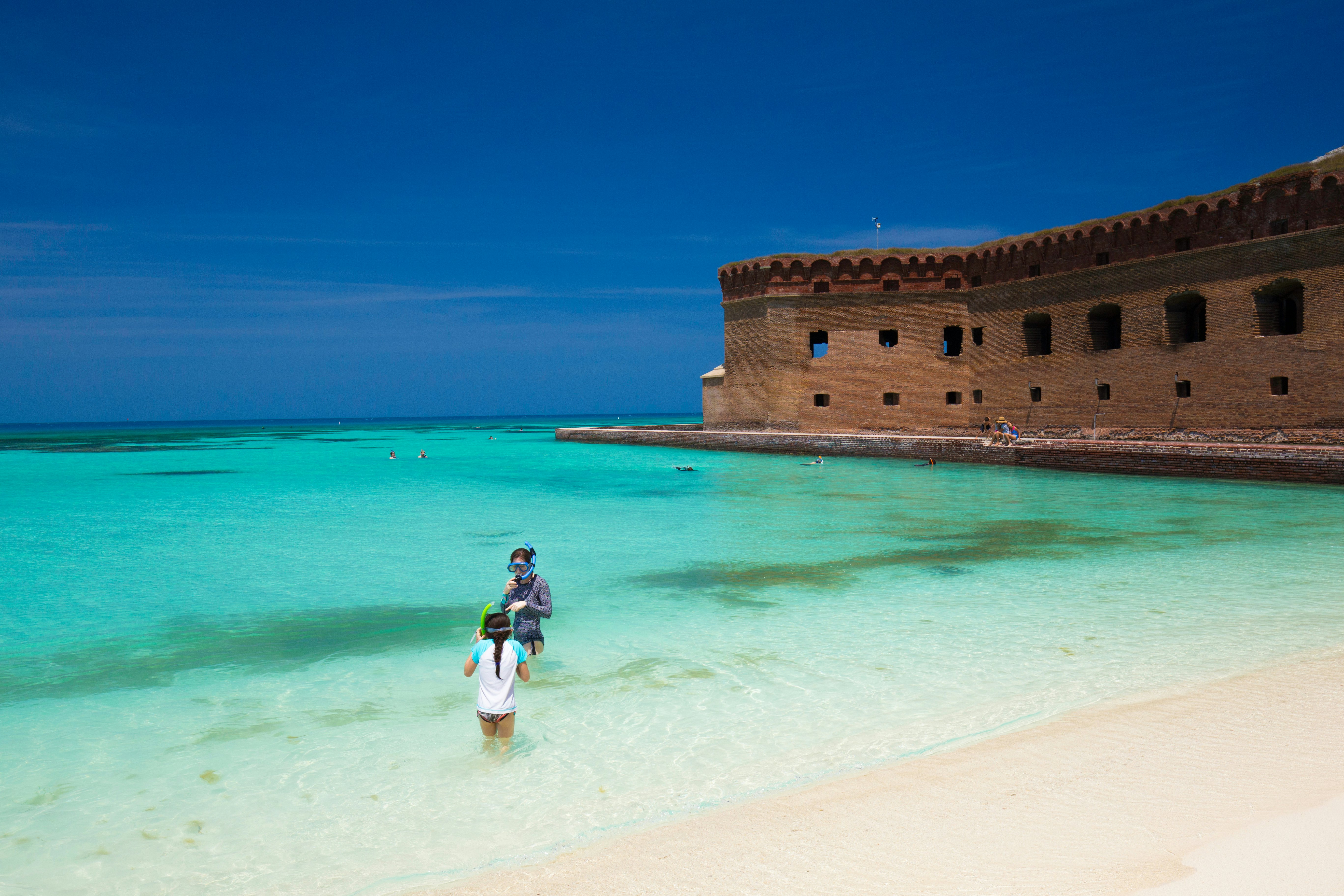
4. Dry Tortugas National Park
Best for sheer remoteness
Situated in the heart of the Gulf of Mexico some 70 miles (113km) west of Key West, Dry Tortugas National Park comprises seven islands – and is perhaps the most isolated destination within the entire US national park system. In the 19th century, the US Navy set up an outpost here as a strategic position into the Gulf of Mexico. By the American Civil War, Fort Jefferson – the main structure on the islands – had become a prison for Union deserters and at least four other people (among them Dr Samuel Mudd, who had been arrested for complicity in the assassination of Abraham Lincoln). Hence a new nickname: Devil’s Island. Later a quarantine station for smallpox and cholera victims, it was declared a national monument in 1935 by President Franklin D Roosevelt, and was upped to national-park status in 1992 by George Bush.
Those who make the long trip to get here are rewarded with vivid coral reefs, a massive Civil War–era fortress and secluded beaches like nowhere else. On paper, Dry Tortugas covers an extensive area – over 70 sq miles (181 sq km). In reality, only 1% of the park (about 143 acres) consists of dry land, which means almost all of the park’s allure lies under the water. The marine life is quite rich here, with the opportunity to see tarpon, sizable groupers, lots of colorful coral and smaller tropical fish, plus the odd sea turtle gliding through the sea.
Planning tip: Getting to Dry Tortugas requires a two-plus hour ferry ride aboard the Yankee Freedom III or a private boat charter. Key West Seaplane Adventures takes up to 10 passengers on half-day tours to the island; flight time one way is 40 minutes each and you spend 2½ hours on the island. Reserve well in advance.
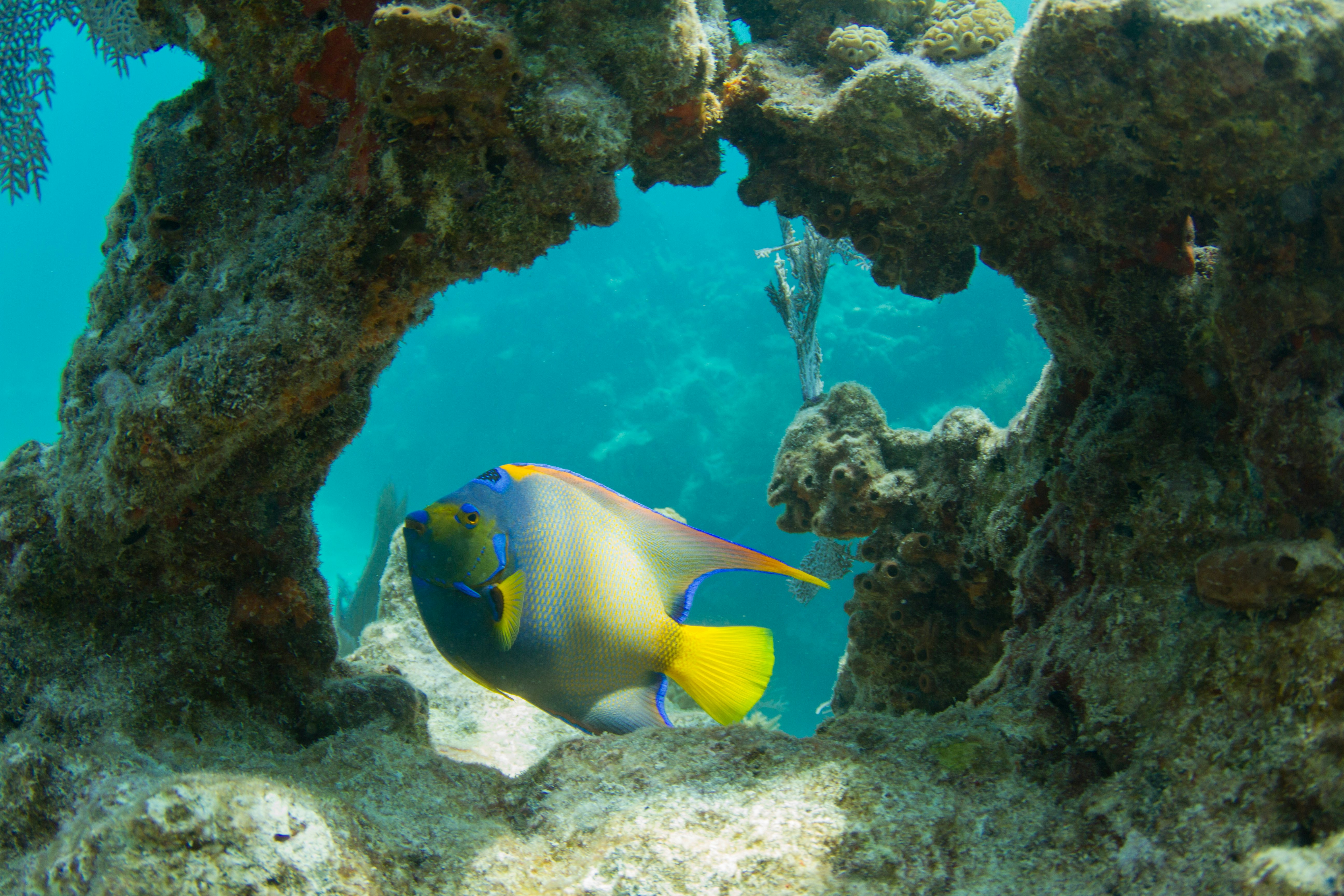
5. Looe Key
Best for shallow snorkeling and diving
Five miles (8km) off Big Pine Key, Looe (pronounced “loo”) Key is in fact a U-shaped reef within the Florida Keys National Marine Sanctuary. The remains of the sunken frigate that gives the park its name and her cargo form part of the marine sanctuary, but they’re not the only sunken ships in this part of the islands. The Looe Key reef contains the 210ft (64m) Adolphus Busch, used in the 1957 film Fire Down Below and then sunk (110ft/33.5m deep) in these waters in 1998.
The waters around the reef are generally shallow, making it a good location for snorkelers and beginner divers. A deeper section of the reef with a steep drop (about 100ft/30.5m at one point) will appeal to advanced divers. All skill levels may spot species like barracuda, jacks and parrotfish, among others.
Planning tip: The reef within this 2800-sq-mile (7252-sq-km) preserve can only be visited through a specially arranged charter-boat trip, best organized through any reputable Keys diving outfit. On Ramrod Key, Looe Key Dive Center (in a resort of the same name) offers several types of excursions.
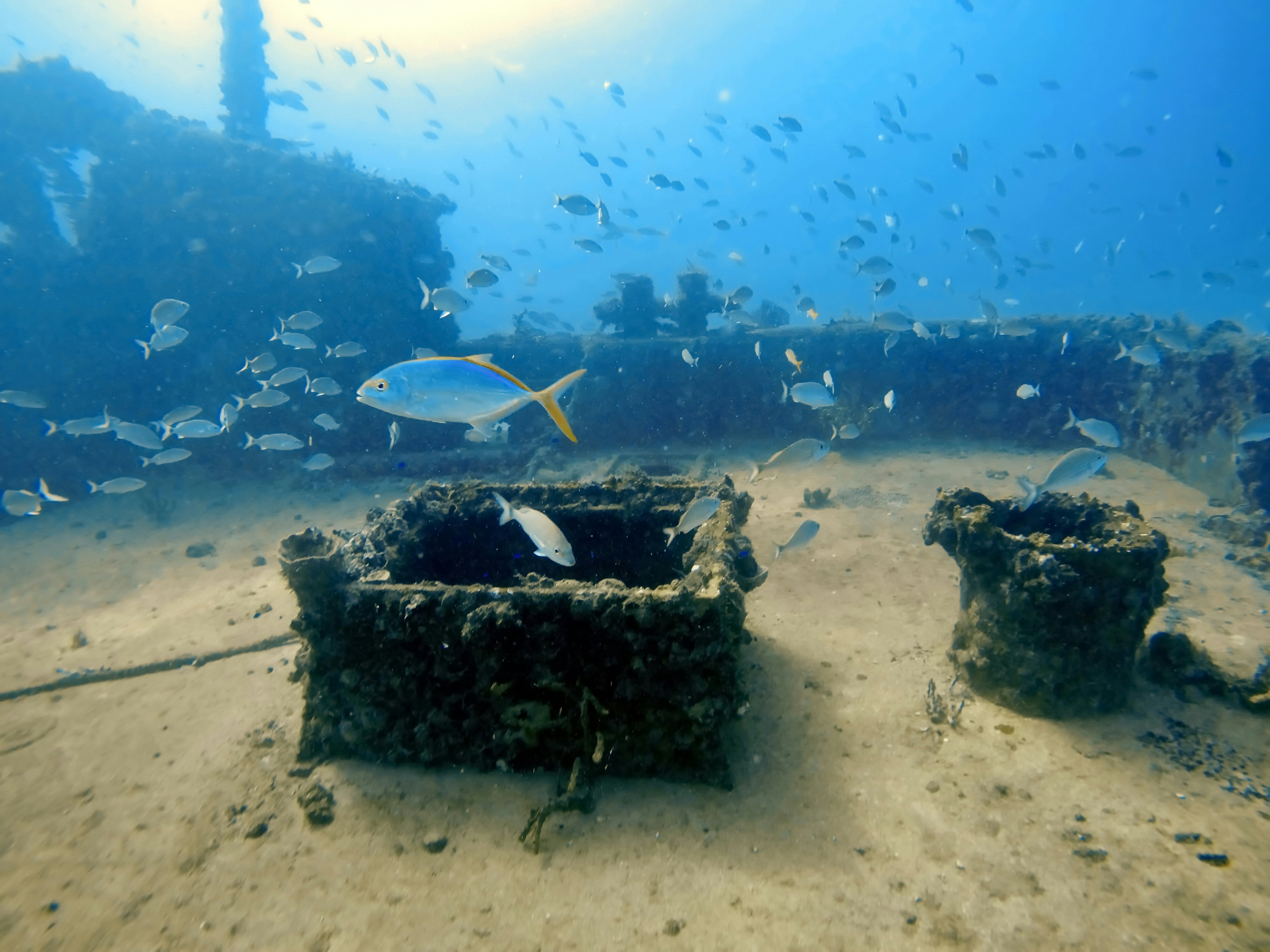
6. Lauderdale-by-the Sea
Best for easy city access
As a whole, Lauderdale-by-the-Sea is a calm, family-friendly version of Fort Lauderdale, filled with quiet strolls and sunny skies. Yet once you’ve enjoyed the pleasures of its boardwalk and are looking to dive a little deeper, book a scuba diving tour with Gold Coast Scuba. The reef system off the shore is incredible, with fish, coral, turtles and lobster calling this area their home. Just a bit further out, loads of shipwrecks, including the SS Copenhagen and Lady Luck, lie waiting to be explored.
Given the number of shipwrecks off these shores (some call exploring these waters the “Wreck Trek”), you might have some, um, concerns about getting in a boat to explore them. You shouldn’t: while some ships succumbed to shallow reefs, hurricanes and even pirates over the years, many were purposefully sunk to serve as artificial reefs, allowing local marine life to thrive. Stingrays, moray eels, nurse sharks and tropical fish now swim or scuttle about the area. Soft coral on the wrecks serve as ideal nesting grounds for smaller marine creatures.
Planning tip: After you’ve swum among the fish, perhaps you’d like to eat a few. Even Keel Fish Shack offers a range of seafood-focused dishes for brunch, lunch and dinner, while romantic Blue Moon Fish Co. has a prime location overlooking the Intracoastal Waterway.
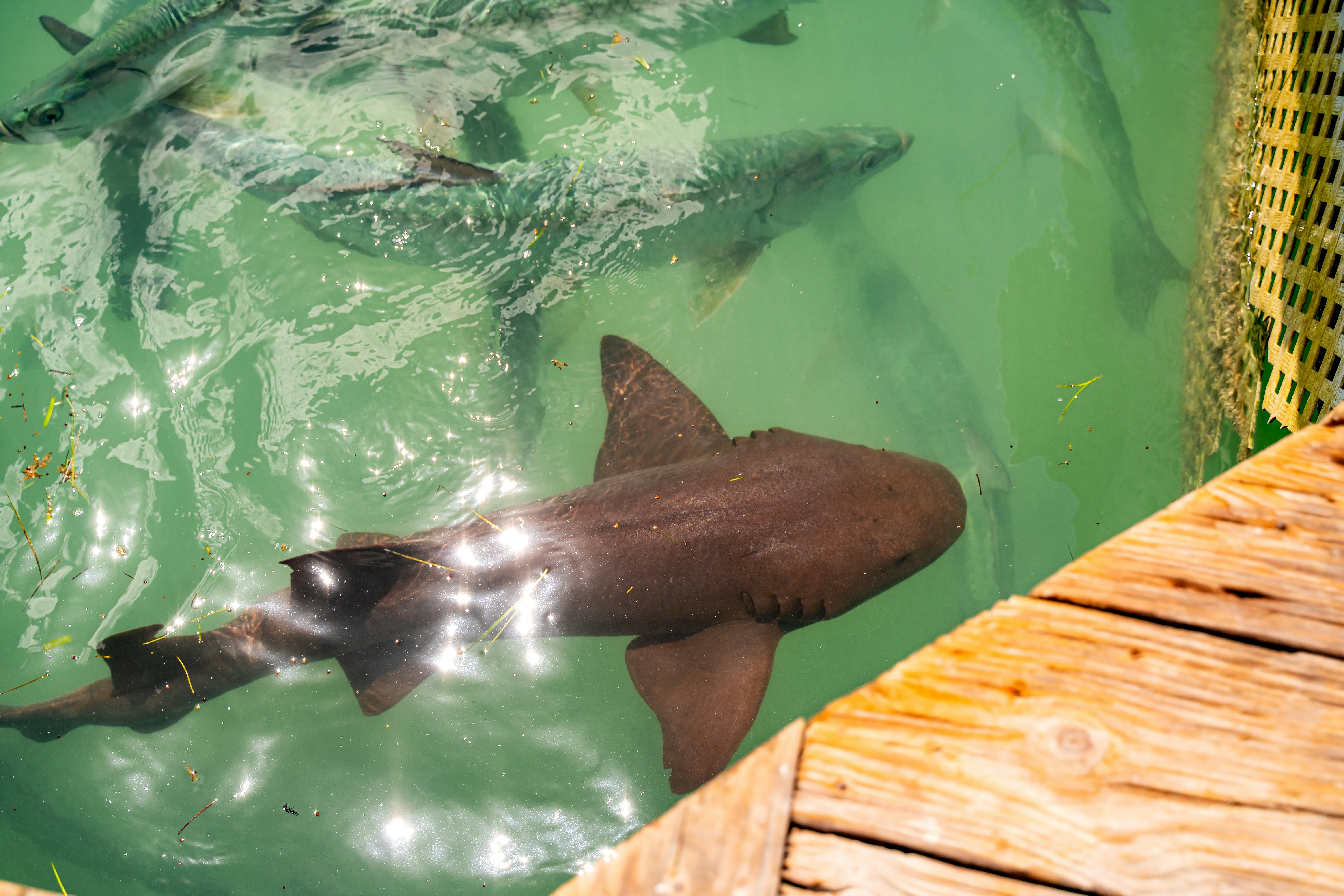
7. Robbie’s Marina
Best for feeding very, very big fish
Islamorada’s scruffy jewel and a highlight any trip to the Keys, Robbie’s Marina covers all bases: it’s a local flea market, tacky tourist shop, sea pen for tarpons, waterfront restaurant and jumping-off point for fishing and snorkeling expeditions, all contained with one driftwood-laced compound.
After you’ve parked, pick up a piece of unique memorabilia at the market portion of Robbie’s, which showcases crafts and art from around the Keys. If folks aren’t perusing paintings, they might be knocking back beers while checking out the waterfront view.
Once you’ve taken in the singular vibe, book a snorkeling trip and bob amid coral reefs – again, the ones that lie off these Keys are some of the best in all of the Americas.
Detour: If you don’t want to get out on or under the water, you can stick to the dock and feed the freakishly large tarpon – or watch the scene as others do. “Watch,” in this case, isn’t just looking at the fish – but also at the shocked reactions of tourists when a fish the size of a large dog comes snapping out of the water.
This article was adapted from the 11th edition of Lonely Planet’s Florida guidebook, published in August 2025.









